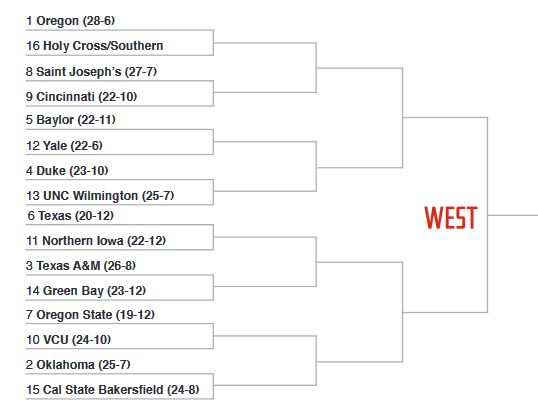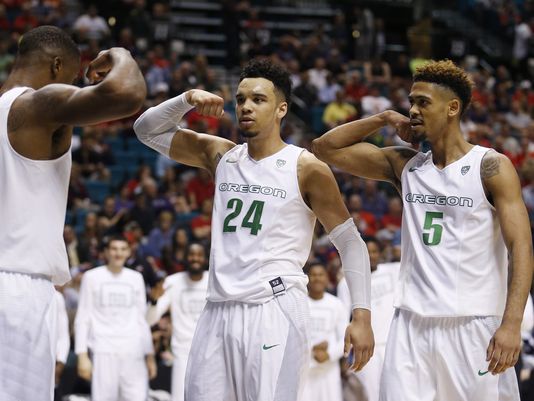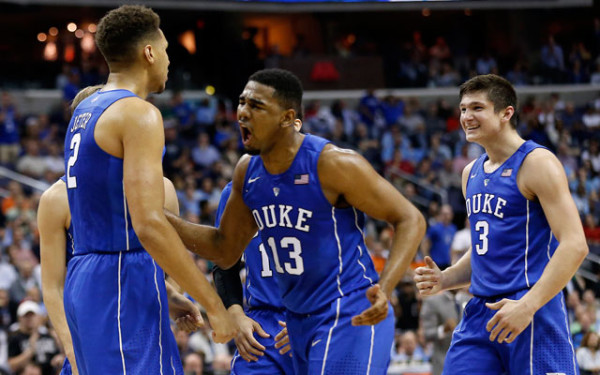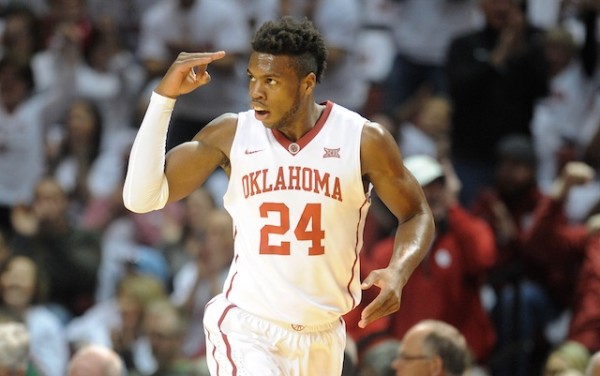Bracket Prep: West Region
Posted by Andrew Murawa on March 14th, 2016On Monday and Tuesday we will roll out our region-by-region analysis on the following schedule: Monday (East and West); Tuesday (South and Midwest). Here, Andrew Murawa (@amurawa) breaks down the West Region from top to bottom. Also, be sure to follow our RTC West Region handle on Twitter for continuous updates the next two weeks (@RTCwestregion).
Region: West
Favorite: Oregon, #1, 28-6. Maybe there are college basketball fans back east that go to sleep early and haven’t seen the Ducks this season. And maybe some fans out west have chosen to ignore the Pac-12 Network. Because there are some people who are surprised that the Ducks are a #1 seed. But news for the uninformed: Oregon is really, really good. KenPom ranks Oregon as the fifth-most efficient offensive team in college basketball. It’s a squad built around a seven-man rotation that is dedicated to truly positionless basketball. Everybody on the team can handle and pass; just about everyone can take their defender off the bounce; most are capable of knocking in jumpers at a high rate. But where the Ducks have morphed from a good team into a great one is on the defensive end. With two elite shot-blockers in Chris Boucher and Jordan Bell anchoring the back line, quick and aggressive athletes swarming the perimeter and offering help defense, and a savvy defensive tactician on the sideline in Dana Altman, Oregon is capable of taking away a team’s best options, forcing turnovers (on better than 20 percent of opponents’ offensive possessions) and converting easy (and often spectacular) transition opportunities. There are without a doubt teams in this region that can beat Oregon, but the Ducks should be favored in every game between now and Houston.
Should They Falter: Oklahoma, #2, 31-3. If your team has a National Player of the Year candidate like Buddy Hield, shoots 42.6 percent (second in the nation) from three-point range, plays solid defense and also has one of the nation’s best coaches in Lon Kruger, it has a chance to go very far in this NCAA Tournament. After starting the season 15-1 (with the only loss a triple-overtime epic to Kansas), the Sooners have cooled by going 10-6 down the stretch against strong Big 12 competition. But when things are going good for Oklahoma (and they are often going good), the Sooners can play with any team in the country. Hield, Isaiah Cousins and Jordan Woodard are the flashy names, but big men Kadeem Lattin and Ryan Spangler do the dirty work that can help win tight games in March.
Grossly Overseeded: Duke, #4, 23-10. Let’s throw the red meat out there, because the Blue Devils are the answer everyone wants to hear even if Texas A&M could also be an appropriate answer. Both of these teams are very good, but each is probably overseeded by a line. Duke checks in at #22 in KenPom’s metric system with a 6-8 record against NCAA Tournament teams. A&M sits at #17 in KenPom and has a a strong 6-3 record against NCAA Tournament teams, but also has five losses to teams that failed to make the field. Meanwhile, #5 seeds like Indiana, Purdue and Maryland appear to have better resumes. Make no mistake, both the Blue Devils and the Aggies are perfectly capable of taking their good fortune and turning it into deep runs, but based purely on seeding vs. performance, both squads could afford to be docked a line. Still, let’s not count either seeding as a gross failure on the committee’s part, regardless of this section’s title.
Grossly Underseeded: Saint Joseph’s, #8, 27-7. Nobody in this region honestly has much of a right to complain too loudly. If anything, maybe the Hawks and their conference compatriot VCU could be a seed line higher. The Hawks faltered a little down the stretch of the regular season, taking losses at Davidson, St. Bonaventure and at home against a mediocre Duquesne team in their final five games of the regular season, before coming back strong to win the A-10 conference tournament.
Sweet Sixteen Sleeper (#12 seed or lower): Green Bay, #14, 23-12. The Phoenix play at the nation’s sixth-fastest pace in part because they use an average of just 13.4 seconds per offensive possession (best in the nation). On the other end of the court, their modus operandi is to slow the opposition down to force turnovers (which they do on better than 20 percent of opponents’ possessions), which in turn leads to transition opportunities, where 34.5 percent of their shot attempts are created (second in the nation). In short, this is a team whose style can cause problems for teams not used to it. Their first round opponent, Texas A&M, features a pair of quality ball-handlers in Anthony Collins and Alex Caruso, but both of those players can be a little loose with possessions at times, a weakness Green Bay could be primed to exploit.
Final Four Sleeper (#4 seed or lower): Duke, #4, 23-10. It seems like a bit of a stretch to call a Mike Krzyzewski-coached team a “Final Four Sleeper,” what with Coach K’s 12 Final Four appearances, but the rules for this blurb are a #4 seed or lower so we will roll with it. Duke clearly has the talent to find a way to Houston. The Blue Devils might be playing on a high wire without a net with their six-man rotation that seems perpetually banged up and on the verge of foul trouble, but maybe the stark lack of depth becomes a positive. Rather than water down his on-court talent with lesser talented reserves, Krzyzewski is forced to roll with his best players as long as possible. These kids won’t get that tired when you factor in timeouts, foul shots, replay reviews and all the other assorted stoppages in NCAA Tournament games. And with Grayson Allen, Brandon Ingram and Luke Kennard, the Devils have three of the best shot-makers in the nation. Duke haters don’t want to hear it, but the Blue Devils are still dangerous.
Carmelo Anthony Award. Buddy Hield, Oklahoma (25.0 PPG, 5.6 RPG, 2.1 APG, 61.8% eFG). One of two realistic candidates for the National Player of the Year award this season, Hield has been spectacular. He’s 19th in the nation in three-point percentage (46.4%), knocking in 127 of those shots this year. He also can create off the bounce and get to the free throw line, where he shoots 89.5 percent. And in between? He can finish around the hoop or launch a floater to convert from midrange. He’s an offenisve maestro who can go off for 30+ at any time.
Stephen Curry Award. Gary Payton II, Oregon State (15.9 PPG, 7.9 RPG, 5.1 APG, 2.5 SPG). I’ve gone with a guy from a small school in this spot in previous years, and while guys like Melvin Johnson (VCU), Carrington Love (Green Bay) and Justin Sears (Yale) are on the radar, a player the caliber of Payton from a school making its first NCAA Tournament appearance in 26 seasons qualifies him for this notation. The great part is that much of the casual college basketball public has yet to be turned on to the basketball magnificence that is GPII. Not only is he an the son of basketball royalty, an elite perimeter defender and a terrific senior point guard happy to sacrifice individual numbers for wins, but he’s also an elite athlete capable of throwing down jaw-dropping dunks with only the slightest provocation.
Home Cooking: Oklahoma, #2, 20 miles. It’s a 30-minute drive from the University of Oklahoma campus in Norman to Oklahoma City, and you can bet the Chesapeake Energy Arena will be jam-packed with Sooner fans supporting their squad. Of some concern: With Texas and Texas A&M in the same opening round location, the Sooners could find themselves in a tight game with a base of current and former Big 12 rival fans jumping quickly and decisively to the side of the Sooners’ underdog opponent.
Can’t Miss Second Round Game: #2 Oklahoma vs. #7 Oregon State, 3/20. This game may not even wind up being all that competitive, as the Beavers will likely be without freshman Tres Tinkle (foot injury), leaving them a little short-handed in the offensive firepower category. But the mere chance to watch Payton guard Hield for as long as the game is within reach is enough to excite any basketball enthusiast.
Don’t Miss This One Either: #4 Duke vs. #5Baylor, 3/19. – Allen, Ingram and Kennard will be challenged by the length, athleticism and depth of talented Bears like Taurean Prince, Jonathan Motley and Rico Gathers. Both teams have been defensively suspect this season, while showing a keen ability to score efficiently and frequently. The Blue Devils have struggled at times this season against zone defense and have utilized the strategy a few times themselves, meaning there will also be plenty of intrigue over coaching decisions.
Lock of the Year: #1 Oregon vs. #2 Oklahoma Elite Eight Matchup. With apologies to Texas A&M and Duke – two very good teams with the ability to throw a wrench into these plans – let’s schedule the Ducks and Sooners for a Saturday evening affair in Anaheim in a couple weeks. Both teams are going to walk to the Sweet Sixteen, where challenging games could face each if the brackets hold up. Sure, cold shooting nights could spoil this matchup (especially for an Oklahoma team reliant on outside shooting), but these are clearly the best two teams in the region. While we’re at it, let’s get Mark Helfrich and Bob Stoops to schedule themselves a companion piece on the gridiron in the not-too-distant future?
Juiciest Potential Matchup – Purists: #1 Oregon vs. #4 Duke, Regional Semifinal. Dana Altman testing his considerable coaching mettle against the dean of the profession? Oh goodness, yes. Altman’s matchup zone and pressure defense against Duke’s polished and precise, mistake-free offense? Big ball-handling wings like Grayson Allen, Brandon Ingram and Luke Kennard against Dillon Brooks, Tyler Dorsey and Elgin Cook? The mouth waters at these possibilities.
Juiciest Potential Matchup – Media: #3 Texas A&M vs. #6 Texas, Second Round. When the Aggies of College Station took their ball and went to the SEC in a fit of pique, a great traditional intrastate rivalry was thrown aside. The two teams were forced into action in the opener of the Battle 4 Atlantis on Thanksgiving Eve last November, with A&M coming away with a decisive 11-point win. But since then, Shaka Smart has dialed in the sweet spot for the Longhorns, turning them from a shaky group into a very capable outfit. The prospect of the Aggies and Longhorns fighting it out in Oklahoma City — while Sooner fans look on in amusement — is almost too much to bear. Please let this happen.
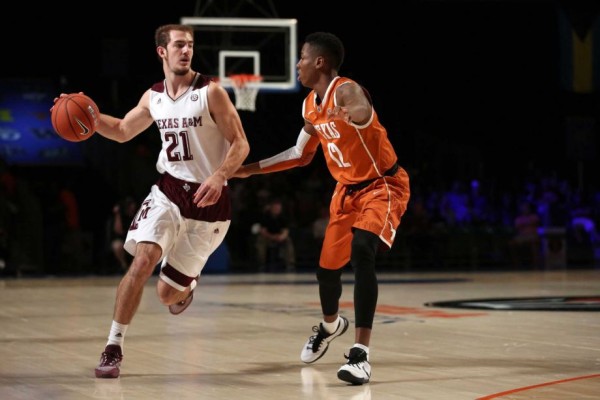
The Atmosphere For A Potential A&M/Texas Game Would Be Much Different Than The Last Time They Met. (Logan Reidsma)
We Got Screwed: Good Morning Oregon State. There’s nothing worse than West Coast teams being sent east and asked to play its opener in the morning hours. When the Beavers tip off against VCU on Friday morning, it will be 10:30 AM in Corvallis. Wayne Tinkle’s team can’t use this as an excuse, but you would hope that television executives would be smart enough to let the West Coast teams play in the second half of an early double-header like that. No such luck.
Strongest Pod: Texas A&M/Green Bay, Texas/Northern Iowa. While Texas A&M and Texas are the favorites here, there is no guarantee that either will make it to the weekend. As we mentioned above, Green Bay’s style could give an unprepared team fits, while Northern Iowa has repeatedly proven its ability to play with the big boys — wins over North Carolina, Iowa State and Wichita State (twice) prove it.
Wildcard: Upset History. This bracket is chock-full of programs with a history of great NCAA Tournament runs from a dark horse position. You know about VCU and its run from the First Four to the Final Four five years ago. Saint Joseph’s was within six seconds and a John Lucas III rattled-in three of going to the Final Four in 2004. Cincinnati rode great seasons three times out of smaller conferences to at least the Elite Eight, including a Final Four appearance as a Great Midwest Conference member in 1992 (not to mention NCAA titles in ’61 and ’62). Green Bay ended the collegiate careers of Jason Kidd and Lamond Murray back in 1994. In 2002, UNC Wilmington sent Sam Clancy and USC packing in overtime a year after Clancy and the Trojans had made an Elite Eight run. And, of course: Ali Farokhmanesh.





























